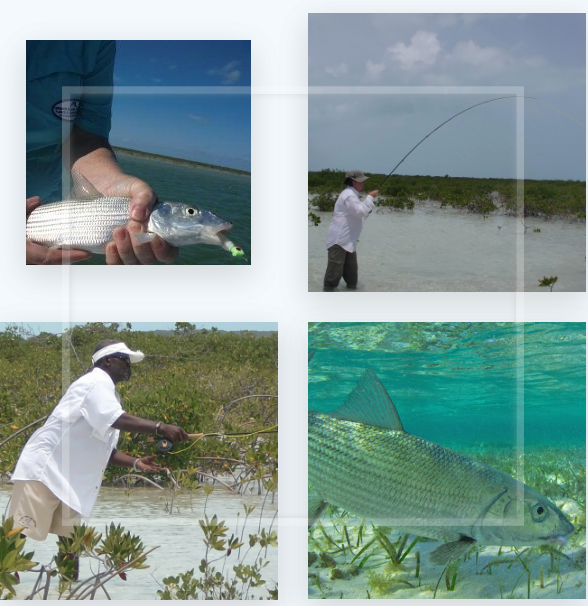WHAT YOU CAN EXPECT TO CATCH!
Voted worlds best for Blue Marlin, Yellowfin Tuna and Wahoo by Florida Sports Fishing & Marlin and Saltwater Sportsman magazines. The Turks and Caicos Islands offer a remarkable selection of Big Game Fishing, Sports fishing and Flats fishing.
WHAT WILL I CATCH?
Here in the Turks and Caicos Islands we tell the season by the types of fish we are catching. Take a look at the chart to see what will be biting during your trip. In fact, if you are already on the Island why not come down to Turtle Cove and talk with our crew to learn more.
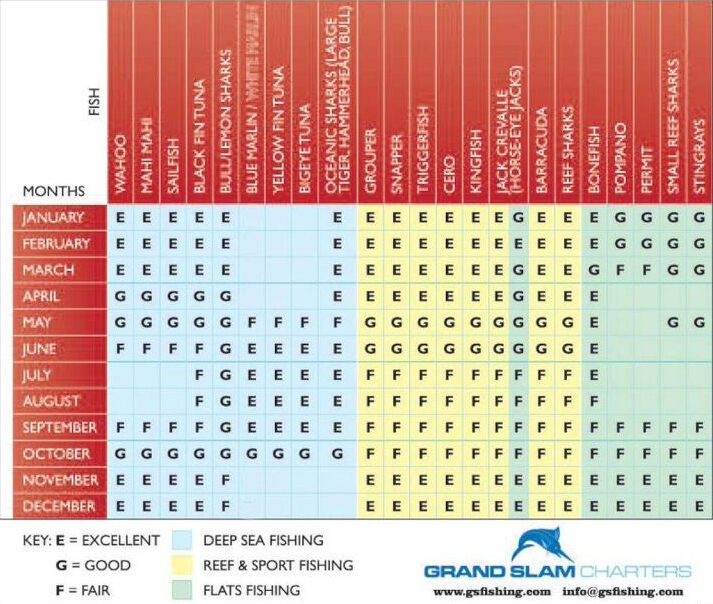
WAHOO
Possibly the worlds fastest swimmer, this torpedo-like fish strikes at lightning speeds and makes spectacular high speed runs, fish around 100lbs are common. The Gwendolyn holds the Caribbean record at 138llbs but we expect to beat that soon! Aficionados travel the world to fish for Wahoo in Turks and Caicos. It is found around wrecks and reefs where smaller fish that it feeds upon are abundant, but it may also be found far out at sea. It is reputed to be one of the fastest fish in the sea, attaining speeds of 50 mph (80 km) and more. The first scorching run may peel off several hundred yards of line in seconds. Occasionally this fish jumps on the strike and often shakes its head violently when hooked in an effort to free itself.
Fishing methods include trolling with whole, rigged baits as well as with strip baits or artificial lures. Live bait fishing and kite fishing are productive, but the wahoo is a relatively scarce species and is usually taken incidentally while fishing for other oceanic species. The flesh is finely grained and sweet and is considered excellent eating! This is a wahoo that you find in the Turks and Caicos islands and it has a lot of stripes when you see it close up in the flesh.
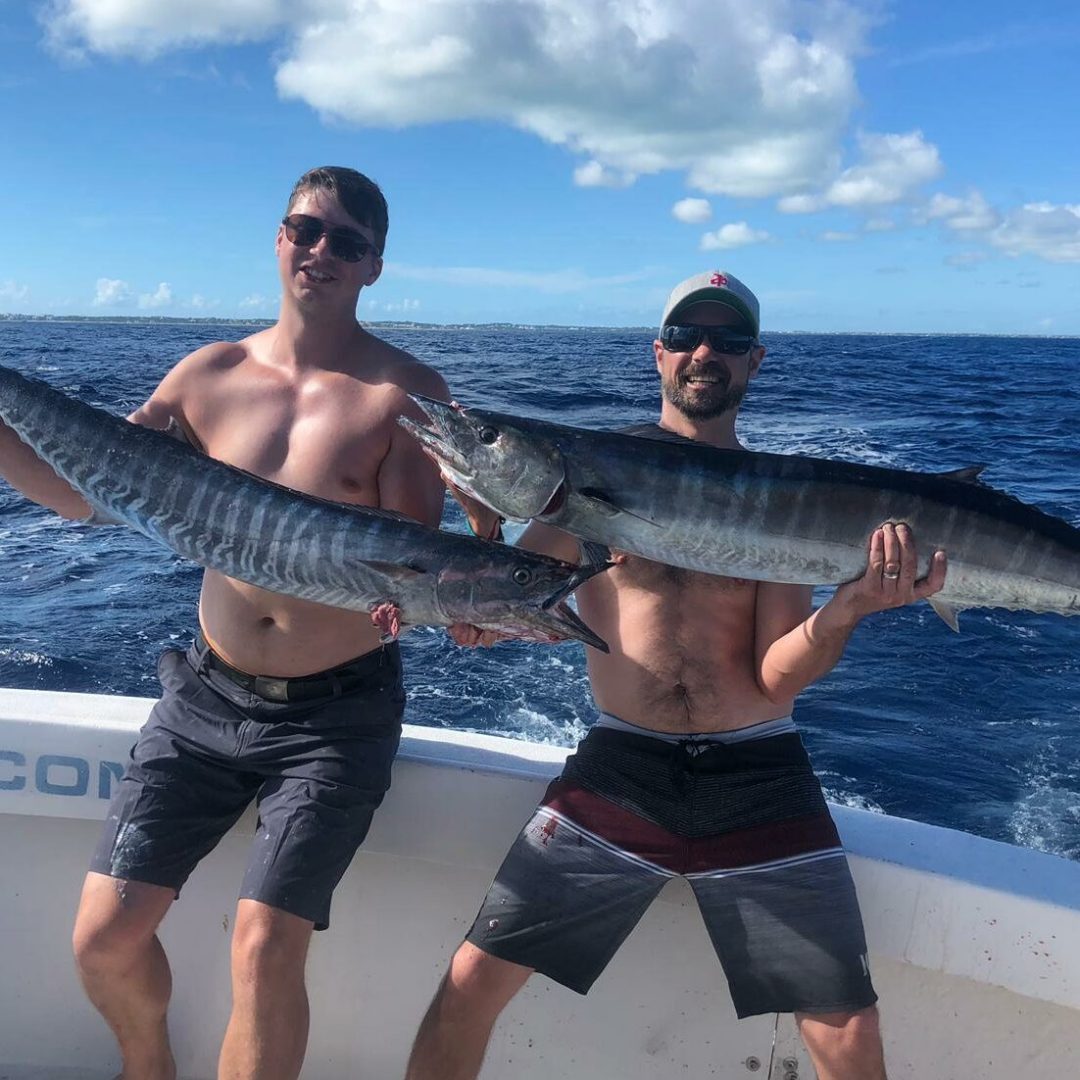
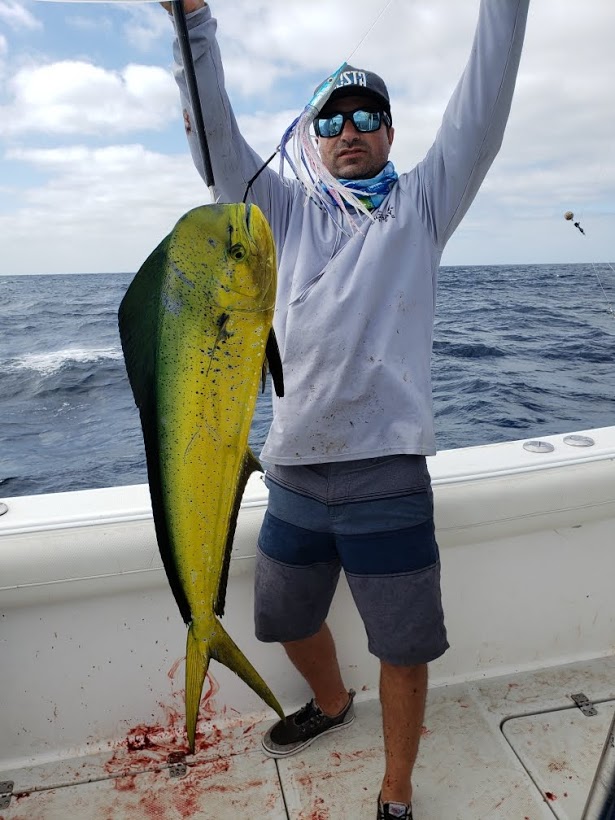
MAHI-MAHI OR DORADO
Their catches average 7 kg to 13 kg (15 lbs to 28 lbs). They are distinguished by dazzling colours: golden on the sides, bright blues and greens on the sides and back, making them popular with game fishers.
One of the fastest-growing fish and fast swimmers, with a top swimming speed of 50 knots. The Mahi-Mahi is a distinctive fish, both for its shape and its colors. Though it is among the most colorful fish in the sea, the colors are quite variable and defy an accurate, simple description. Generally, when the fish is alive in the water, the Mahi-Mahi is rich iridescent blue or blue green dorsally; gold, bluish gold, or silvery gold on the lower flanks; and silvery white or yellow on the belly.
The sides are sprinkled with a mixture of dark and light spots, ranging from black or blue to golden. The dorsal fin is rich blue, and the anal fin is golden or silvery. The other fins are generally golden-yellow, edged with blue. When removed from the water, the colors fluctuate between blue, green, and yellow. After death, the fish usually turns uniformly yellow or silvery gray.
SAIL FISH
November to April; less frequent between May and September. Sailfish are blue to grey in colour and have a characteristic sail (dorsal fin) which often stretches the entire length of the back.
November to April; less frequent between May and September. Sailfish are blue to grey in colour and have a characteristic sail (dorsal fin) which often stretches the entire length of the back.
Its outstanding feature is the long, high first dorsal which is slate or cobalt blue with a scattering of black spots. The second dorsal fin is very small. The bill is longer than that of the spearfish, usually a little more than twice the length of the elongated lower jaw. The vent is just forward of the first anal fin. The sides often have pale, bluish gray vertical bars or rows of spots.
Considered the fastest fish in the ocean with speeds of up to 110 (kph) or 68 (mph). Its fighting ability and spectacular aerial acrobatics endear the sailfish to the saltwater angler, but it tires quickly and is considered a light tackle species. Fishing methods include trolling with strip baits, lures, feathers or spoons, as well as live bait fishing and kite fishing. The most action is found where sailfish are located on or near the surface where they feed.
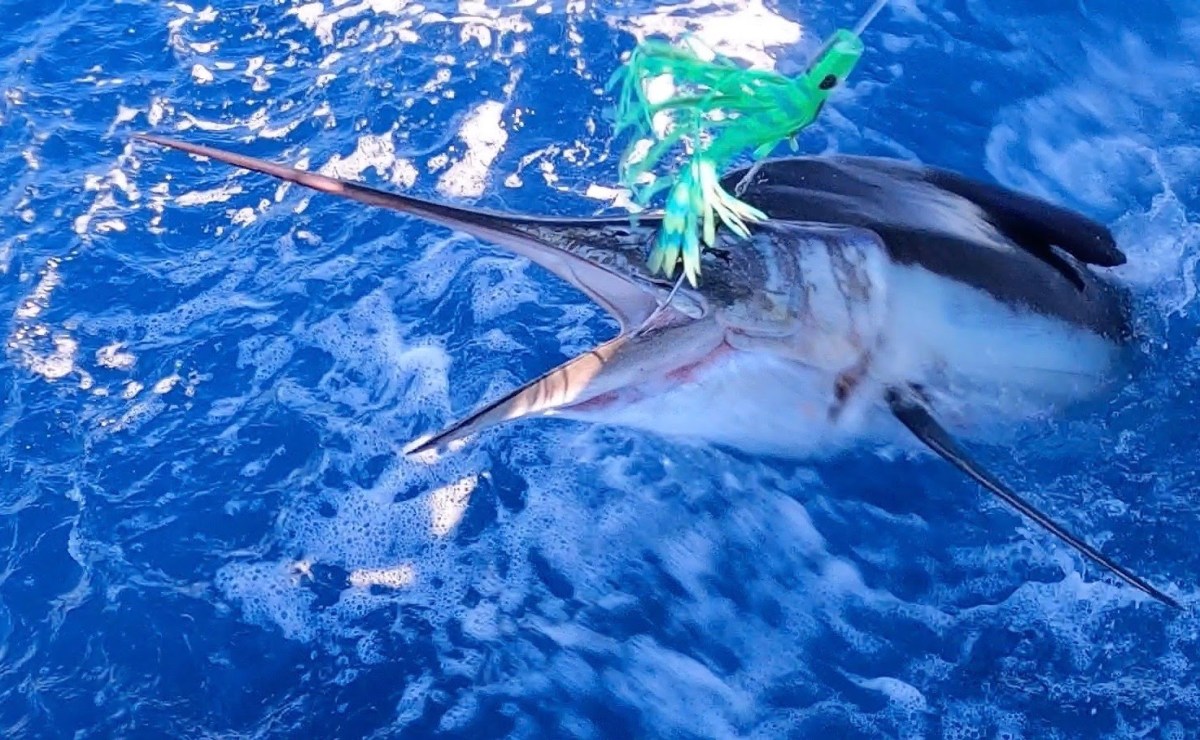
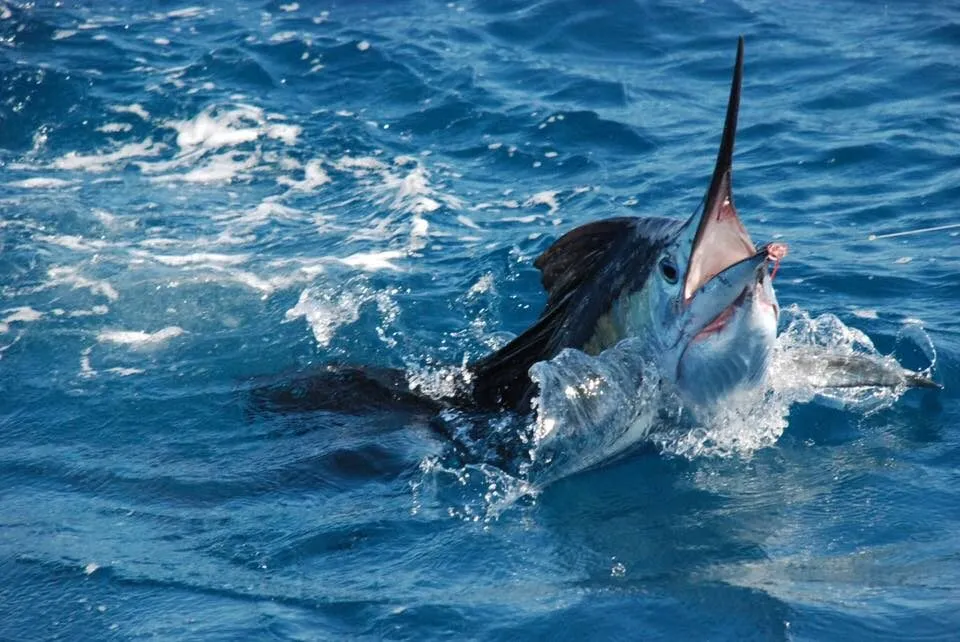
BLUE MARLIN
A powerful, aggressive fighter, they run hard and long, sound deep, and leap high into the air in a seemingly inexhaustible display of strength. Fishing methods include trolling large whole baits such as bonito, dolphin, mullet, mackerel, bonefish, ballyhoo, flying fish and squid as well as various types of artificial lures and sometimes strip baits.
They are known to feed on squid and pelagic fishes, including blackfin tuna and frigate mackerel.
Please Note: All Billfish and Sharks are Strictly Catch and Release!
BARRACUDA
Nicknamed the Sea Wolf, Barracuda are common both offshore and on the inshore reefs and grow much larger than those found in USA waters.
Voracious, aggressive feeders, specimens up to 50lbs are frequently caught. They provide spectacular sport as they smash a lure or take bait and leap and run at high speed once hooked.
Pacific barracuda are easily recognized by their long, silvery bodies, widely spaced dorsal fins and a mouth full of sharp, pointed teeth. Pacific barracuda do not reach the large sizes of their relative, the great barracuda but are spirited fighters in their own right.
They are found from Central America to as far north as Alaska during extreme warm water episodes. However, they are generally rare north of Point Conception, California. Like other barracudas, they are highly active piscivores that consume a variety of smaller fish species. They are typically found near shore in small groups and often around reefs, kelp and other structure.
This Species, although is edible, is not recommended eating.In particular, pregnant women and young children should avoid eating this species. Barracuda carry a toxin in their flesh which could cause a reaction when eating that could cause lasting effects.
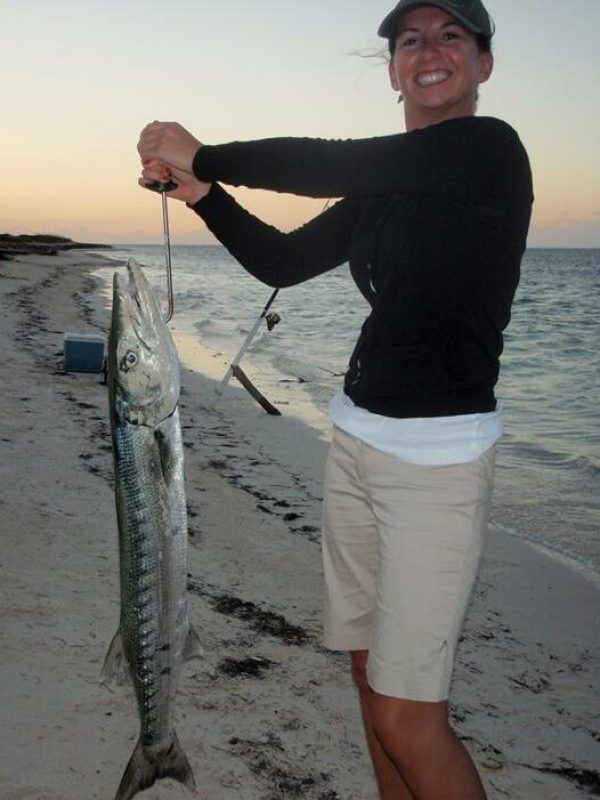
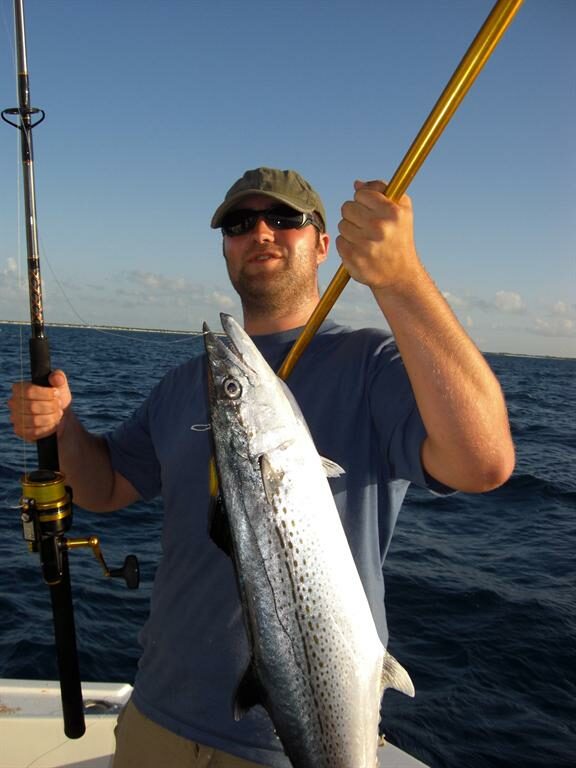
MACKEREL
Three types of Mackerel are found in our waters, these are the Large King Mackerel (Kingfish), Spanish Mackerel (common around USA Southern waters) and Cero Makerel, a larger more aggressive species of the Spanish.
King Mackerel
King Mackerel may occasionally be caught from ocean piers and around inlets. Congregations often occur around wrecks, buoys, coral reefs, and other such areas where food is abundant. Schools vary in size and the largest individuals are usually loners.
Spanish Mackerel
This is an excellent game fish that can be taken on a wide variety of lures and baits. Nylon jigs are considered one of the best lures, especially when retrieved rapidly with an occasional jerk of the rod tip to impact a darting motion to the jig. Feather lures and spoons are also successful, while minnows and live shrimp are the best natural baits. Occasionally almost any lure or bait will work, while at other times, nothing will.
Cero Mackerel
Cero differs from the king mackerel and Spanish mackerel in having a pattern of both yellow spots, yellow orange streaks, and a dark color line running the length of the body, and a lateral line that gradually curves down toward the caudal peduncle. The anterior third of the first dorsal fin is black like the Spanish mackerel. The pectoral fins are covered with small scales like the king mackerel.
They are popular game fish and are frequently taken by commercial fishermen. Sometimes, cero are used as rigged bait for larger game fish. Fishing methods are identical for cero and Spanish mackerel. As with any mackerel fishing, fast trolling while looking for baitfish is a good way to find ceros. Common lures include small silver spoons and white jigs. They also hit surface swimming plugs, chuggers, and shallow running plugs. They have sharp teeth so a wire leader is essential.
TUNA
Famous for Yellowfin Tuna, but Blackfin, Bigeye and Albacore are all common in the Turks and Caicos (often 5 lines will hook up simultaneously with 3 types of Tuna!)
Big heavy weight fighters, the challenge is not only bringing a Tuna to the boat but doing it before the Sharks steal your catch ! Yellowfin typically range from 20lb to 120lbs Yellowfin This is probably the most colorful of all the tunas. The back is blue black, fading to silver on the lower flanks and belly. A golden yellow or iridescent blue stripe runs from the eye to the tail, though this is not always prominent. All the fins and finlets are golden yellow though in some very large specimens the elongated dorsal and anal fins may be silver edged with yellow. The finlets have black edges. The belly frequently shows as many as 20 vertical rows of whitish
Bigeye
At one time it was not recognized as a separate species but considered a variation of the yellowfin tuna. They are similar in many respects, but the bigeye second dorsal and anal fins never grow as long as those of the yellowfin. In the bigeye tuna the margin of the liver is striated and the right lobe is about the same size as the left lobe, in the yellowfin tuna the liver is smooth and the right lobe is clearly longer than either the left or the middle lobe.
Albacore
The most distinguishing feature of this member of the tuna and mackerel family is its very long pectoral fins that reach to a point beyond the anal fin. The pectoral fins of other adult tunas may also be moderately long, but never extend all the way to the anal fin. Though the very long pectoral fins readily distinguish the adult albacore from other adult tunas, it should be noted that juvenile albacore might have shorter pectoral fins.
Blackfin
Blackfin tuna are the smallest tuna species, generally growing to a maximum of 100 centimetres (39 in) in length and weighing 21 kg (46 lbs). Blackfin have oval shaped bodies, black backs with a slight yellow on the finlets, and have yellow on the sides of their body.
These tuna do not consume as much fish in their diet as other tunas, and will eat the tiny larvae of king shrimp or mantis shrimp, true shrimp, and crabs, as well as small fish. They do, of course, also eat juvenile and adult fish and squid. They are a short-lived, fast-growing species; a 5 year old fish would be considered old.
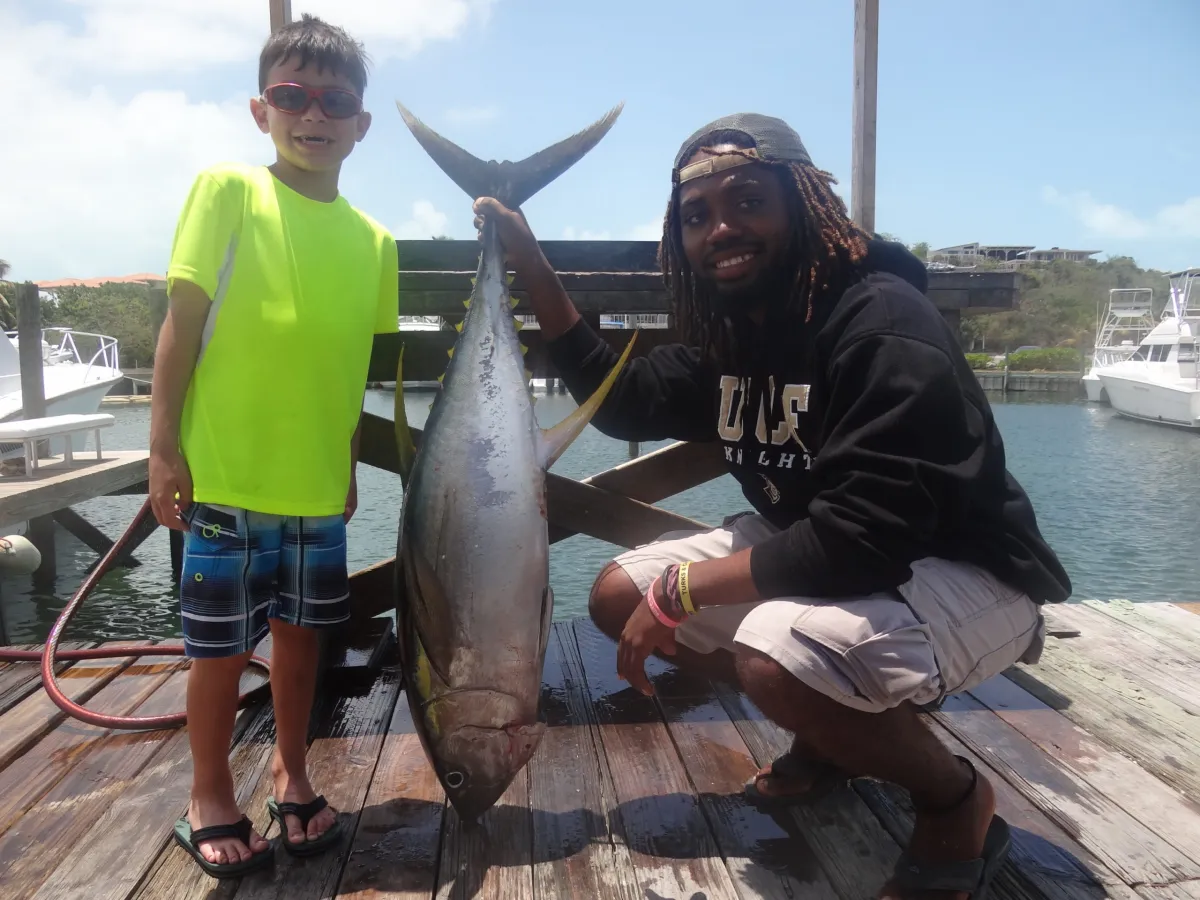
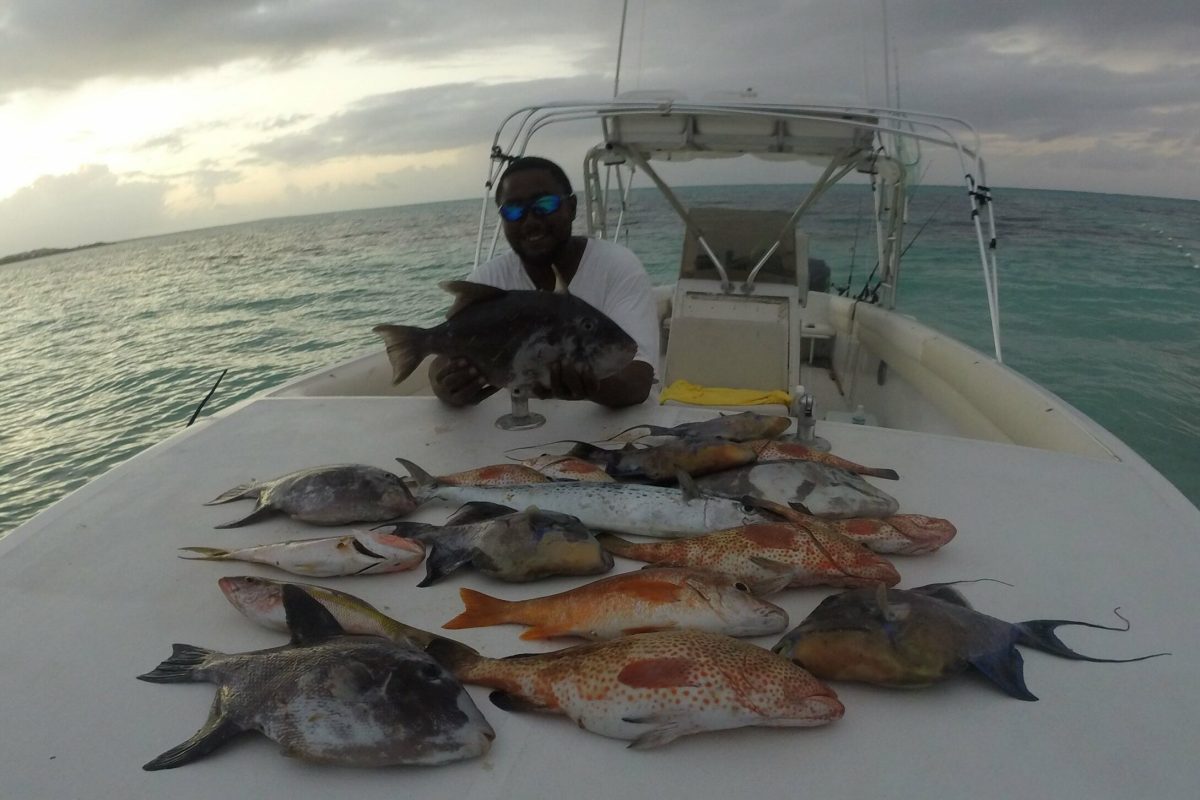
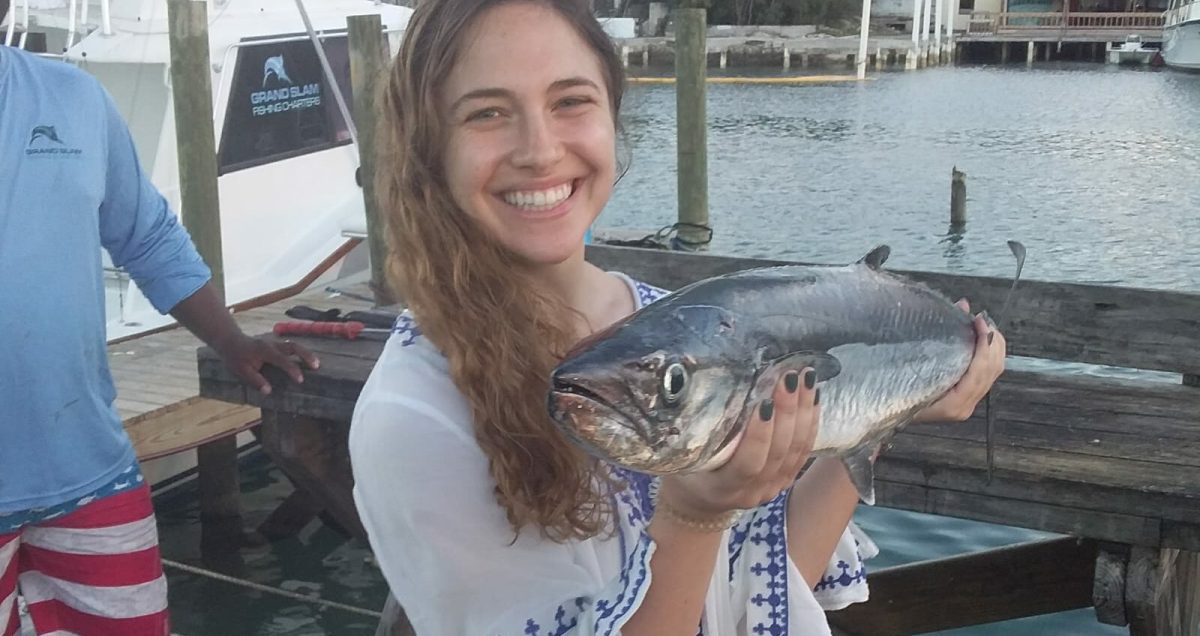
BOTTOM FISH
Space prevents us from listing all fish caught on our off shore and in shore reefs, however in addition to a myriad of tropical fish, bottom fishing usually sees plentiful catches of Snapper (red, mutton, mangrove, yellowtail) and Grouper (black and Nassau) plus various lesser known panfish, as well as roaming predators such as Mackerel, Kingfish, and Small Wahoo.
Red Snapper
The pinkish to red color and sharply pointed anal fin (rather than rounded) distinguishes the red snapper from most other Gulf of Mexico snappers. The snout is long and triangular and the eyes are a distinctive red. Adults have no dark lateral spot, but juveniles have a dark spot on the upper sides below the anterior soft dorsal fin.
Black Grouper
Like other grouper, when hooked black grouper are dogged opponents that must be turned quickly before they retreat to cover. They will take a variety of natural and artificial baits, and are considered outstanding table fare.
Mutton Snapper
It is a handsome fish, varying from orangish to reddish yellow with small blue streaks on the head, back and flanks, and orangish fins. The colors may vary, as with most species of fish. A combination of factors distinguish it from other snappers. There is a black, oval shaped spot on the upper flank on each side, the anal fin and rear edge of the dorsal fin is angulate (pointed rather than rounded), the tail is lunate, and the dorsal fin has ten spines and fourteen rays.
Yellowtail Snapper
This colorful bottom fish is easily identifiable. The body is olive or bluish gray above with olive-yellow spots and blotches. It has a prominent, brilliant yellow stripe running from the tip of the snout through the eye to the tail; the dorsal fin is also mostly yellow . The deeply forked tail is bright yellow, hence the name.
BONEFISH
Sought after worldwide, many anglers focus entirely on this elusive hard fighting shallow water fish. Mainly fished on fly but also plastic jigs and lures, bonefishing was largely ignored in Turks and Caicos until quite recently.
We do not offer Bonefishing or flyfishing charters however for guests that wish to do both deep sea fishing or bottom fishing and combine another day with bonefishing, we will be happy to arrange the charter with the best guides available
Fish stocks are thus plentiful and fish tend to be less nervous than in the neighbouring Bahamas. Good sized bonefish reach 15lbs although most range between 2 and 5llbs. Providenciales offers many square miles of “flats” and Bonefish are even caught in inshore Sea fed lagoons. Boats are not always essential!
The sides and belly of the fish are bright silver. Parts of the fins and the snout may show a yellowish or dusky color. Bonefish are basically schooling fish. The smaller ones can be seen in large schools on the flats. The larger ones tend to form smaller schools or groups. They feed on crabs, shrimp, clams, sea worms, sea urchins, and small fish that inhabit the sandy flats and intertidal areas.
They are often seen rooting in the sand, their tails breaking the surface of the shallow water; an action commonly known as “trailing”. At other times they will plough the bottom stirring up silt and marl, known as “mudding”. They are powerful and run very fast and hard when hooked. Fishing methods include plug, fly or spin casting from a skiff or while wading on tidal flats, using shrimp, crabs or similar baits.
This species is protected under the rules of Turks and Caicos and are strictly CATCH and RELEASE.
